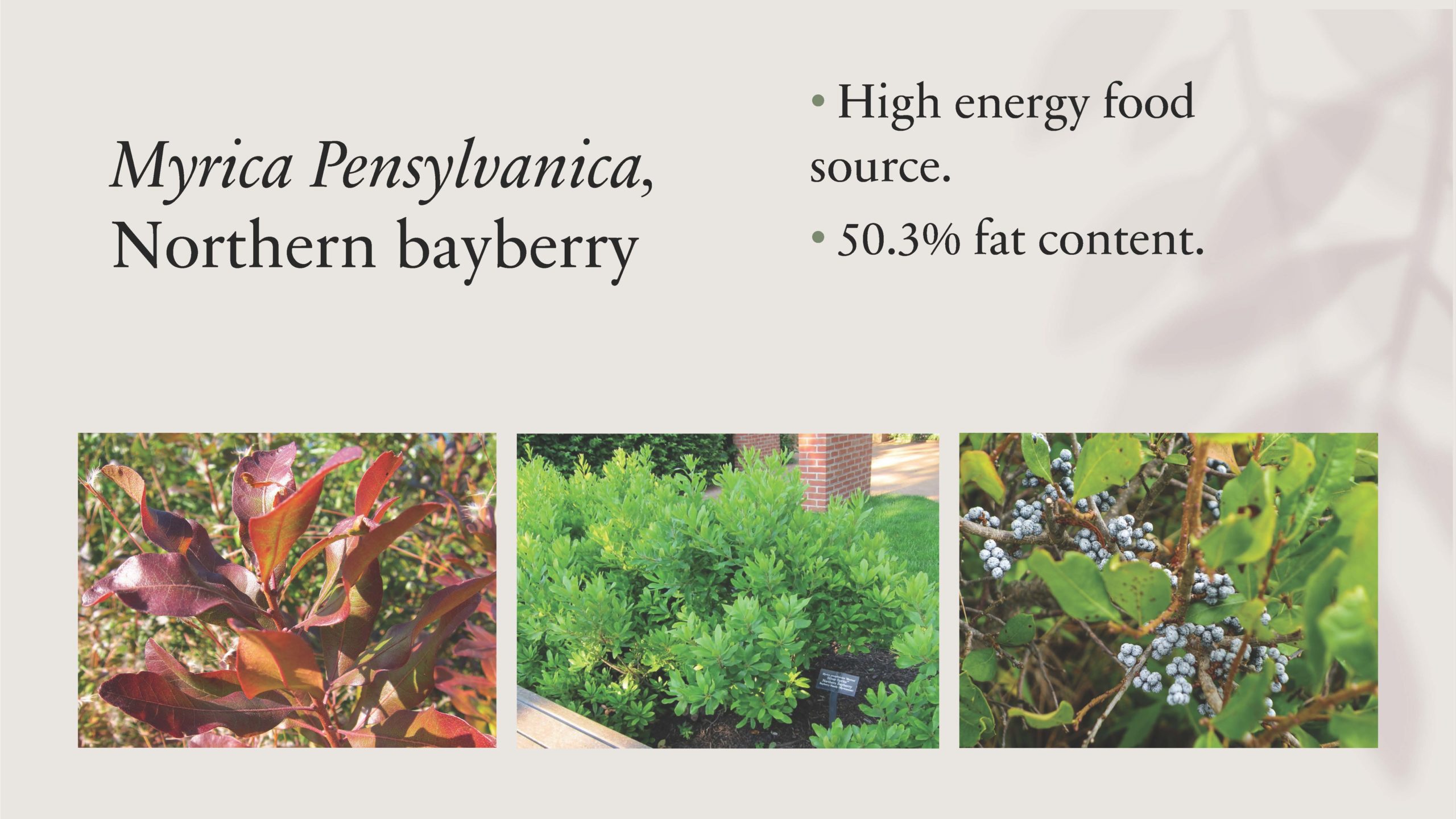Designing With Native Plants
- Home
- /
- News & Events
- /
- Events
- /
- Designing With Native Plants

Designing With Native Plants:
Beyond the Benefits for Wildlife
On our properties, native plants go beyond providing food and habitat for wildlife. What other benefits and functions do they have? This talk focuses on how native plants, when “planned for purpose” (and beauty of course), do so much more. Living mulch and erosion control are two such examples. Individual plants and specific groupings, along with the functions they provide, are discussed.
Marie Chieppo is the owner of EcoPlantPlans, LLC in Sagamore Beach. Marie is a certified native plant landscape designer and horticulturist, accredited organic landcare professional, member of the Association of Professional Landscape Designers (ALPD) and a member of the Ecological Landscape Alliance.

Presentation correction: This is the correct slide for Northern Bayberry.
Additional questions with answers from Marie Chieppo:
Q. What do you think about moss in the landscape?
A. I think mosses are beautiful, provide valuable information about soil/moisture conditions and are ecologically valuable. For insects and other invertebrates, they provide a great habitat and source of food. They filter and retain water while stabilizing the ground and remove CO2 from the atmosphere. Moss can be a great alternative to moist areas where grass won’t grow.
Q. How can you design with native plants that isn’t a wild and crazy meadow?
A. Native gardens can be designed to be formal, informal or somewhere in between. Meadows inherently have plants that grow in clusters and fill up a space quickly (once established). A more “kept” look entails the use of native plants that are:
- spaced properly, (always keeping in mind their size at maturity).
- in scale and grouped in mass. Drifts can be created to provide continuity.
- sited properly. Too little sun or poor soil conditions can result in leggy and droopy plants.
- combination of herbaceous and woody material (provides structure)
in a defined space.
Q. Do you have suggestions for creating a woodland understory for nature?
A. A woodland understory is composed of layers of plants, both herbaceous and woody. Trees, shrubs, herbaceous plants and ground covers will provide habitats and food sources for many kinds of wildlife. Branches, leaves, seeds and flowers will provide a diverse environment for them to thrive in. Plants that grow beneath deciduous trees receive more direct and indirect sunlight than those growing under evergreen trees. Test your soil before you purchase any material. The amount of shade will differ depending on whether the trees are deciduous or evergreen.
Trees: serviceberries, alternate leaf dogwood, sassafras, American hornbeam.
Shrubs: viburnums, spicebush, and common elderberry.
Herbaceous plants: foam flower, woodland phlox, fringed bleeding heart, and ferns work well beneath a canopy.
Q. Do you have perennial suggestions for sandy soils?
A. Perennials that prefer sandy soils are happy being on the drier side and function well with little nutrients. (check to see how much sun the site receives, first)
The following grow in full sun: yarrow (Achillea millefolium), Butterfly milkweed (Asclepias tuberosa), purple coneflower (Echinacea purpurea), seaside goldenrod (Solidago sempervirens), black-eyed Susan (Rudbeckia hirta), Grasses: big bluestem (Andropogon gerardi), little bluestem (Schizachyrium scoparium), switchgrass (Panicum virgatum)
Q. Will you share your plant list?
Two plant-finders that will help you choose the right native plant for your garden:
Cape Cod Native Plantfinder – an APCC project of appropriate native plants for Cape Cod gardens
Native Plant Trust Plantfinder – the Native Plant Trust is the region’s leading organization in native plant conservation and native plant education

